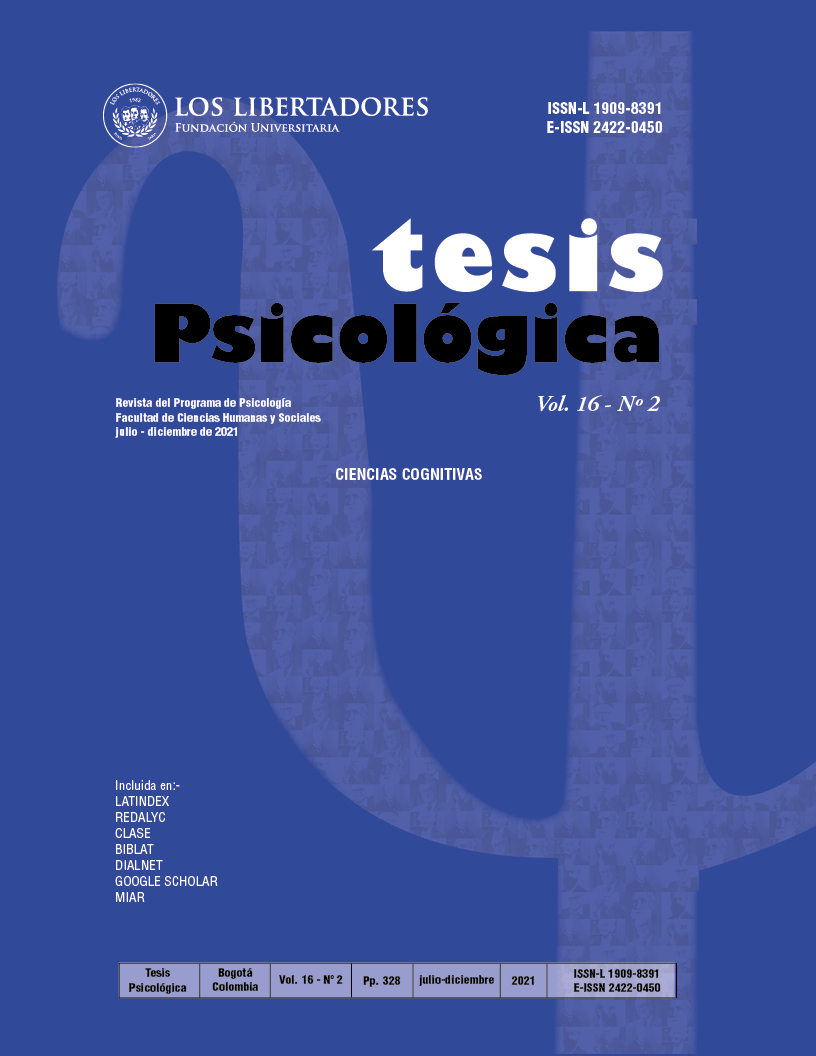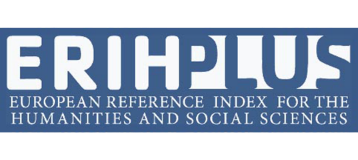Evidence for a general impairment of auditory and visual temporal order judgment in children with reading disabilities
DOI:
https://doi.org/10.37511/tesis.v16n2a2Resumen
Objectives: This study examined visual and auditory processing of children with reading disabilities (RD) to determine whether they show an impaired ability to judge a reading-related process such as temporal order of events and clarify whether or not this deficit is linked to rapid processing deficit. Method: The performance of 16 children with RD was compared with the performance of children in two control groups – one for chronological age (CA) and one for the same reading level –, doing visual and auditory temporal order tasks, both with linguistic and non-linguistic stimuli with inter-stimuli-intervals of 50, 150, or 300 ms. Results: The RD group performance was lower than the performance of the CA group in tasks requiring auditory temporal order processing for linguistic and non-linguistic stimuli. Regarding visual tasks, the RD group performed worse than both control groups in processing non-linguistic stimuli. In general, performance in every group decreased with decreasing inter-stimulus-interval (ISIs), suggesting that children with RD do not have impairments in the speed of perceptual processing. Conclusions: The perceptual problems of children with RD are better explained by temporal order processing problems than by difficulties in rapid processing. Inclusion of temporal order processing tasks in the evaluation of children with RD is recommended.
Descargas
Referencias
Brannan, J. R. & Williams, M. C. (1988). Developmental versus sensory deficit effects on perceptual processing in the reading disabled. Perception & Psychophysics, 44 (5), 437-444. https://doi.org/10.3758/BF03210428
Breier, J. I., Gray, L., Fletcher, J. M., Foorman, B. F. & Klaas, P. (2002). Perception of speech and nonspeech stimuli by children with and without reading disability and attention deficit hyperactivity disorder. Journal of Experimental Child Psychology, 82, 226-250. https://doi.org/10.1016/S0022-0965(02)00005-X
Bretherton, L. & Holmes, V.M. (2003). The relationship between auditory temporal processing, phonemic awareness, and reading disability. Journal of Experimental Child Psychology, 4, 218-243. https://doi.org/10.1016/S0022-0965(03)00023-7
Brickenkamp, R. (1997). d2 Test de atención [d2 Test of attention]. TEA.
Cacace, A.T., McFarland, D.J., Ouimet, J.R., Schrieber, E.J. & Marro P. (2000). Temporal processing deficits in remediation-resistant reading-impaired children. Audiology and Neurotology, 5, 83-97. https://doi.org/10.1159/000013871
Cattell, R. B. & Cattell, A. K. S. (2001). Tests de Factor g. Escala 1 y 2 [A measure of g. Scale 1 and 2] TEA.
Chung, K., McBride-Chang, C., Wong, S., Cheung, H., Penney, T. & Ho, C. (2008). The role of visual and auditory temporal processing for Chinese children with developmental dyslexia. Annals of Dyslexia, 58, 15-35. https://doi.org/10.1007/s11881-008-0015-4
Cuetos, F., Rodríguez, B., Ruano, E. & Arribas, D. (2009). PROLEC-R. Batería de Evaluación de los procesos lectores – Revisada. [Battery of evaluation of the reading processes of the children of primary education]. TEA.
Ellis Weismer, S. (2005). Speech perception in specific language impairment. In D. B. Pisoni & R. E. Remez (Eds.), The Handbook of Speech Perception (pp. 567-588). Blackwell Publishing.
Fostick, L., & Revah, H. (2018). Dyslexia as a multi-deficit disorder: Working memory and auditory temporal processing. Acta Psychologica, 183, 19-28. https://doi.org/10.1016/j.actpsy.2017.12.010
Francisco, A. A., Jesse, A., Groen, M. A. & McQueen, J. M. (2017). A general audiovisual temporal processing deficit in adult readers with dyslexia. Journal of Speech, Language, and Hearing Research, 60(1), 144-158. https://doi.org/10.1044/2016_JSLHR-H-15-0375
Furthermore Hairston, W.D., Burdette, J.H., Flowers, D.L., Wood, F.B., & Wallace, M.T. (2005). Altered temporal profile of visual-auditory multisensory interactions in dyslexia. Experimental Brain Research, 166, 474-480. doi: 10.1007/s00221-005-2387-6
García, E. M. & Magaz, A. (2008). Escala de Magallanes de atención visual (EMAV -1/2) [Magallanes Scale of Visual Attention]. ALBOR-COHS.
Goswami, U. (2003). Why theories about developmental dyslexia require developmental designs. Trends in Cognitive Sciences, 7, 534-540. https://doi.org/10.1016/j.tics.2003.10.003
Hairston, W.D., Burdette, J.H., Flowers, D.L., Wood, F.B. & Wallace, M.T. (2005). Altered temporal profile of visual-auditory multisensory interactions in dyslexia. Experimental Brain Research, 166, 474-480. https://doi.org/10.1007/s00221-005-2387-6
Hood, M. & Conlon, E. (2004). Visual and auditory temporal processing and early reading development. Dyslexia, 10, 234-252. https://doi.org/10.1002/dys.273
Jaśkowski, P. & Rusiak, P. (2008). TOJ in dyslexia. Psychological Research, 72, 65-73. https://doi.org/10.1007/s00426-006-0093-z
Jiménez, J. E. (1995). Prueba de conciencia fonémica [Phonemic awareness test]. In J.E. Jiménez & R. Ortiz (Eds.), Conciencia fonológica y aprendizaje de la lectura: Teoría, evaluación e intervención [Phonological awareness and reading acquisition: Theory, assessment and intervention] (pp. 74-78). Síntesis.
Kanabus, M, Szelag, E., Rojek, E. & Pöppel, E. (2002). Temporal order judgement for auditory and visual stimuli. Acta Neurobiologiae Experimentalis, 62, 263-70. https://ane.pl/pdf/6233.pdf
Kibby, M. Y., Dyer, S. M., Vadnais, S. A., Jagger, A. C., Casher, G. A. & Stacy, M. (2015). Visual processing in reading disorders and attention-deficit/hyperactivity disorder and its contribution to basic reading ability. Frontiers in Psychology, 6, 1635. https://doi.org/10.3389/fpsyg.2015.01635
King, B., Wood, C. & Faulkner, D. (2008). Sensitivity to visual and auditory stimuli in children with developmental dyslexia. Dyslexia, 14, 116–141. https://doi.org/10.1002/dys.349
Laasonen, M., Service, E. & Virsu, V. (2001). Temporal order and processing acuity of visual, auditory, and tactile perception in developmentally dyslexic young adults. Cognitive, Affective, & Behavioral Neuroscience, 1, 394-410. https://doi.org/10.3758/CABN.1.4.394
Laasonen, M., Service, E. & Virsu, V. (2002). Crossmodal temporal order and processing acuity in developmentally dyslexic young adults. Brain and Language, 80, 340–354. https://doi.org/10.1006/brln.2001.2593.
Liddle, E.B., Jackson, G.M., Rorden, C. & Jackson, S.R .(2009). Lateralized temporal order judgement in dyslexia. Neuropsychologia, 47, 3244-3254. https://doi.org/10.1016/j.neuropsychologia.2009.08.007
Liu, S., Wang, L.-C. & Liu, D. (2019). Auditory, visual, and cross-modal temporal processing skills among Chinese children with developmental dyslexia. Journal of Learning Disabilities, 52(6), 431–441. https://doi.org/10.1177/0022219419863766
Lorusso, M. L., Cantiani, C. & Molteni, M. (2014). Age, dyslexia subtype and comorbidity modulate rapid auditory processing in developmental dyslexia. Frontiers in Human Neuroscience, 8. https://doi.org/0.3389/fnhum.2014.00313
Muñetón, M., Ortiz, R., Estévez, A. & Vásquez, C. (2017). Procesamiento temporal auditivo de estímulos lingüísticos y no lingüísticos en niños con dificultades en lectura. Revista Española de Lingüística Aplicada, 30(1), 395-415. https://doi.org/10.1075/resla.30.1.16mun
Ortiz, R., Estévez, A. & Muñetón, M. (2014). El procesamiento temporal en la percepción del habla de los niños con dislexia [Temporal processing in speech perception of dyslexics]. Anales de Psicología, 30 (2), 716-724. https://doi.org/10.6018/analesps.30.2.151261
Rey, V., De-Martino, S., Espesser, R. & Habib, M. (2002). Temporal processing and phonological impairment in Dyslexia: Effect of phoneme lengthening on order judgment of two consonants. Brain and Language, 80, 576-591. https://doi.org/10.1006/brln.2001.2618
Richardson, U., Thomson, J.M., Scott, S. K. & Goswami, U. (2004). Auditory processing skills and phonological representation in dyslexic children. Dyslexia, 10, 215–233. https://doi.org/10.1002/dys.276
Ronen, M., Lifshitz-Ben-Basat, A., Taitelbaum-Swead, R. & Fostick, L. (2018). Auditory temporal processing, reading, and phonological awareness among aging adults. Acta Psychologica, 190, 1-10. https://doi.org/10.1016/J.ACTPSY.2018.06.010
Rosen, S. (2003). Auditory processing in dyslexia and specific language impairment: is there a deficit? What is its nature? Does it explain anything? Journal of Phonetics, 31, 50-527. https://doi.org/10.1016/S0095-4470(03)00046-9
Steinbrink, C., Zimmer, K., Lachmann, T., Dirichs, M. & Kammer, T. (2014), Development of rapid temporal processing and its impact on literacy skills in primary school children. Child Development, 85, 1711–1726. https://doi.org/10.1111/cdev.12208
Tallal, P. (1980). Auditory temporal perception, phonics, and reading disabilities in children. Brain and Language, 9, 182-198. https://doi.org/10.1016/0093-934X(80)90139-X
Tallal, P., Merzenich, M.M., Miller, S. & Jenkins, W. (1998). Language learning impairments: integrating basic science, technology, and remediation. Experimental Brain Research, 123, 210-219. https://doi.org/10.1007/s002210050563
Wang, L., Liu, D., Chen, J. & Wu, Y. (2018). Processing speed of dyslexia: the relationship between temporal processing and rapid naming in Chinese. Reading and Writing, 31(7), 1645-1668. https://doi.org/10.1007/s11145-018-9857-2
Wechsler, D. (2005). Escala de Inteligencia de Wechsler para Niños – IV [Wechsler Intelligence Scale for Children – IV]. TEA.
Descargas
Publicado
Número
Sección
Licencia

Esta obra está bajo una Licencia Creative Commons Atribución-NoComercial-













